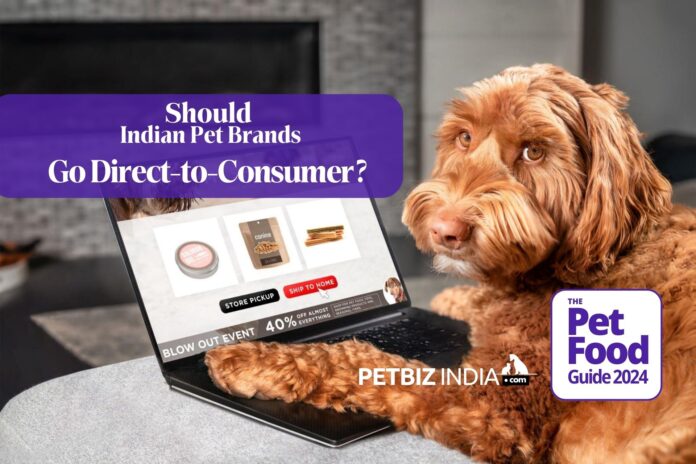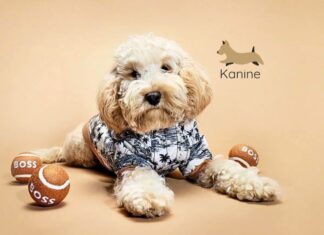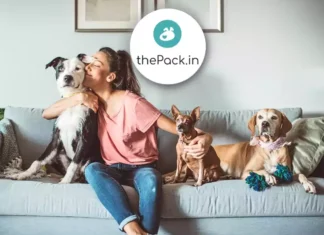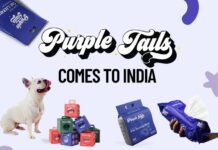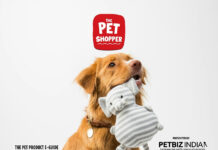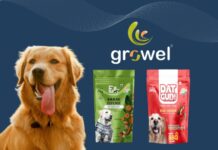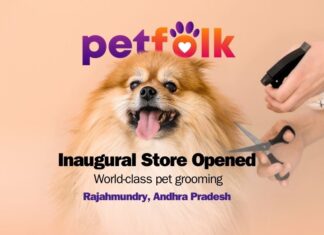The pet care industry in India is booming, with more households welcoming companion animals. As the market grows, Indian pet food and product companies have an opportunity to build stronger customer loyalty and sales through direct-to-consumer (DTC) e-commerce channels.
DTC models involve selling directly to customers online, bypassing traditional retail intermediaries. For pet brands, this often means offering auto-ship subscription services that deliver food and other products directly to consumers’ doors on a recurring schedule.
There are several benefits for Indian pet companies in embracing DTC e-commerce:
- Increased profit margins by eliminating middlemen distributors and retailers
- Ability to control branding, marketing and the customer experience end-to-end
- Developing direct relationships with customers and access to first-party data
- Testing and launching new products directly in the market
- The convenience of recurring subscriptions appeals to busy pet parents
Leading Indian pet care brand Drools has already seen major success through its DTC online platform, which accounts for over 20% of revenue. Customized fresh food brand Supertails also leverages DTC e-commerce to provide personalized meal plans and veterinary advice.

Pros and cons of D2C for start-up pet companies
Going direct-to-consumer (D2C) allows start-up pet brands to build deeper customer relationships and retain higher margins by eliminating retail middlemen. However, D2C requires significant investment in digital marketing, website and subscription infrastructure, logistics for fulfilment and delivery, and customer service capabilities. For resource-constrained start-ups, D2C can be high-risk. Partnerships with estabished e-commerce platforms may allow testing D2C while leveraging existing infrastructure. For start-ups, a hybrid model of D2C along with retail may be optimal initially, before committing to a full D2C approach
Some successful D2C strategies used by global pet brands:

- Personalized meal plans: Brands like The Farmer’s Dog and Ollie analyze information provided by pet parents to create customized food and portion recommendations. This level of personalization helps drive loyalty.
- Subscription services: Recurring auto-ship options provide convenience to pet owners and predictable revenue streams for brands. Chewy’s Autoship program delivers over 70% of sales.
- Online consultations: Direct veterinary and expert advice builds trust. Purina Pro Plan offers Nutrition Live Chat for personalized feeding guidance.
- Mobile apps: User-friendly apps allow easy re-ordering and access to subscriptions. Apps also build engagement through pet health tracking tools.
- Loyalty programs: Rewarding faithful customers helps retention. For example, Petco’s Vital Care membership program has driven growth.
- Social media branding: Creating authentic connections and community keeps brands top of mind. This is table stakes for digital-native D2C brands.
- Data utilization: Collecting first-party data on customers allows personalization at scale. Brands leverage data to optimize offerings.
Suggestion – Hybrid D2C model for pet brands:

- Sell online DTC through your own e-commerce site plus partner with major retail platforms like Amazon or pet specialty retailers like Petco for additional reach.
- Offer a limited DTC subscription service focused on your hero products or bundles, while still distributing the full product line through retailers.
- Allow online customers to opt-in to recurring deliveries or subscriptions for convenience, while selling individually online and in-stores.
- Operate physical storefronts in select high-traffic areas to allow customers to engage with products and staff in-person, while still offering home delivery options.
- Build an online community, content and engagement strategy to foster direct relationships with customers, while leveraging retailer loyalty programs to incentivize omni-channel shopping.
- Curate special DTC-exclusive product sets or limited-edition collections unavailable in stores to attract direct online sales.
- Offer online customers exclusive perks like members-only content or discount codes to incentivize the DTC channel.
Here is an example of a successful hybrid DTC model from the apparel industry:

Allbirds is a digitally native sustainable footwear brand that has adopted a strategic omni-channel approach.Allbirds started online, selling directly to consumers through its own e-commerce site. This allowed them to control branding, customer experience and gain data insights early on.
However, Allbirds now also partners with select physical retailers like Nordstrom to gain additional reach. It’s products are available both online and in-store at major retailers. At the same time, Allbirds maintains exclusives like limited edition shoes only available through its DTC channels. Their mobile app also offers early access to new releases.
Allbirds leverages its DTC community for early feedback when testing new products before deciding which items will be available through wholesale partners.This measured, incremental hybrid strategy has allowed Allbirds to capitalize on the benefits of DTC while still gaining the scale of third-party retail distribution. The company has maintained strong growth and a differentiated brand.
Adopting elements of both DTC and retail models has been key to Allbirds’ success in blending digital convenience with accessible products to scale globally.
The goal of a hybrid is to get the benefits of DTC while still leveraging the reach of retail distribution. Test ideas incrementally to find the right balance for your brand. The optimal mix likely utilizes both DTC and retail in a strategic manner.
Here are 5 tips for pet brands to succeed at direct-to-consumer (D2C) e-commerce:
1. Offer convenience through subscriptions and recurring auto-ship options to make reordering seamless.
2. Provide personalized recommendations and customization – pet parents want to feel their pet’s needs are understood.
3. Invest in digital marketing and social media to build community and brand loyalty. Content should be educational and entertaining.
4. Develop a user-friendly e-commerce site and mobile app to make the shopping experience smooth. Optimize for mobile.
5. Leverage data to continuously refine offerings and personalize the customer experience. Seek feedback and respond quickly.
Additional best practices include excellent customer service, loyalty programs, partnering with influencers, and leveraging UGC (user generated content).
The key is balancing convenience with customization to make pet parents’ lives easier while showing your brand truly understands their pet’s needs. Meeting those needs conveniently and consistently is the key to D2C success.
The most successful D2C pet brands complement convenience with an obsession on customer experience. Combining digital convenience with authentic engagement is the winning formula to build loyalty.
While DTC requires investing in new capabilities, for pet brands it can foster loyalty through consistent convenience and lead to higher lifetime value of customers. As India’s e-commerce market surges, pet companies should consider DTC as a sales channel to unlock in the coming years.
The digital-first future is here for pet care. Is your brand ready to meet pet parents online? What do you think – should more Indian pet companies embrace direct online sales? Let me know your thoughts in the comments.
Feedback:
M: 9987386742 | 7977941829


